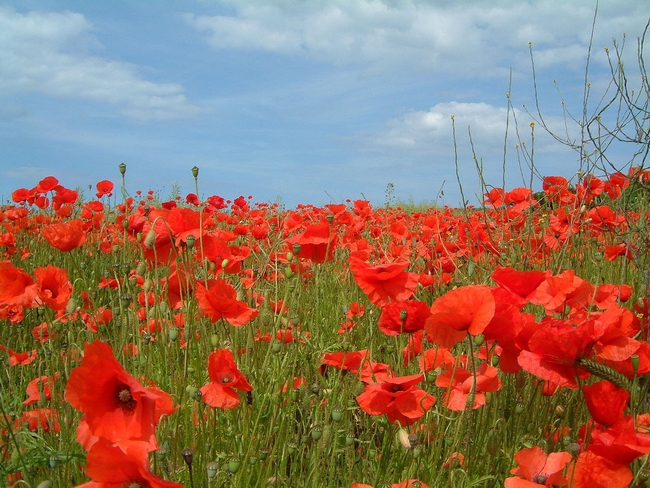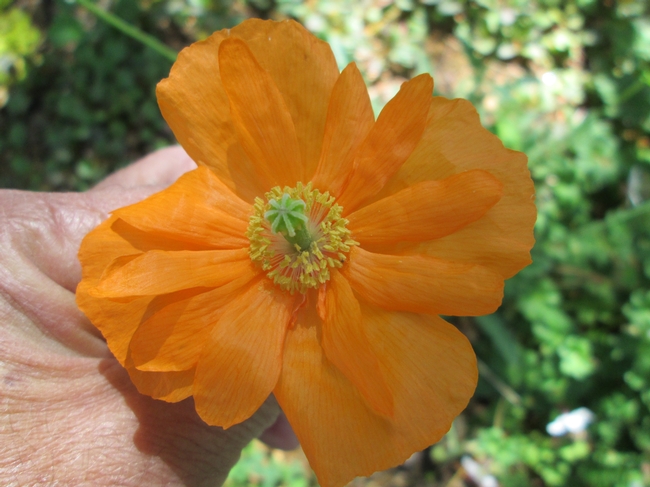- Author: Alison Collin
With Memorial Day fast approaching my thoughts have turned to poppies because a paper Red Flanders Poppy (Papaver rhoeas) is often worn to remember and honor those who have fought for their country. In many parts of Europe the plants are still to be found growing in cornfields and along byways in large masses and, although in some places they have been declared an agricultural weed, most people secretly love them.
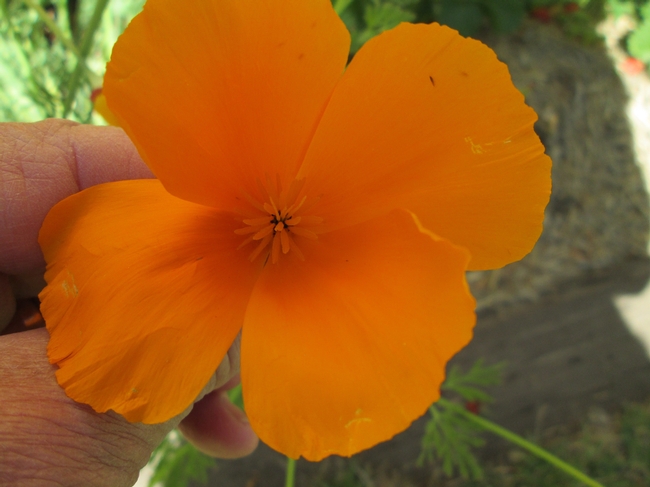
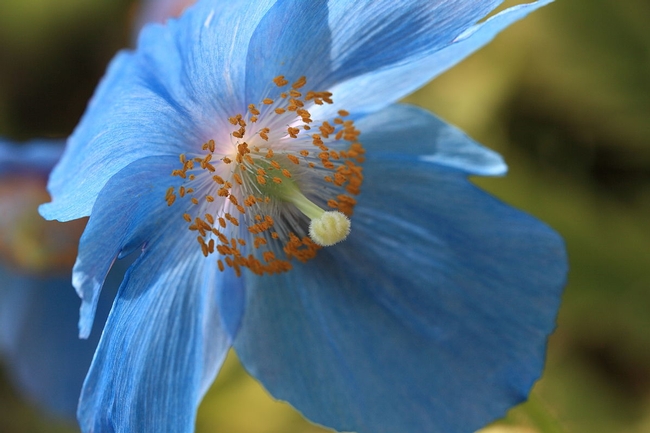
The poppy family, Papaveracae contains 25 genera, and over 100 species which generally emanate from the temperate latitudes. Many have wonderfully flamboyant flowers such as the well-known California poppy, (Eschscholzia california) with its saturated orange flowers which clothe many dry hillsides of the state in spring, to the exquisite sky blue Himalayan blue poppy (Meconopsis betonicifolia) which is tricky to grow at the best of times and would hate the dry atmosphere in the Owens Valley.
However there are many garden varieties of poppies which are easy to grow here and it is hard not to love their vibrant crepe petals.
California Poppies now come in a wide range of colors such as pale cream (White Linen), burnt orange (Mikado), yellow (Chrome Queen), and purple (purple gleam). They are perennials but can be grown as annuals where there is a long season. They have a long taproot and resent any attempts to transplant them, so the seed needs to be sown where they are to grow. Water to keep moist until germination has occurred after which occasional watering should suffice, although they will flower for a longer season if given a more regular supply.
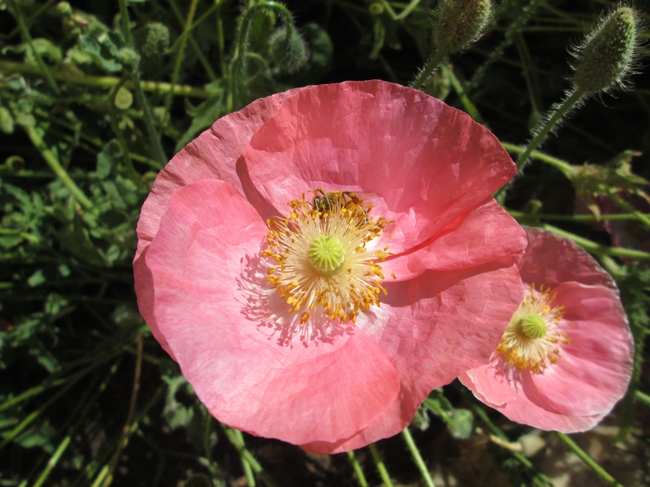
Shirley Poppies (P. rhoeas) are annuals and do well here if sown in the fall to will bloom in the spring. They grow about 3 feet tall and about 1 foot wide, and come in a variety of colors apart from the original red – white, pink, salmon, and lilac, sometime with a contrasting white edge. Bees love them for their early supply of pollen, and I have often witnessed them almost fighting around the anthers.
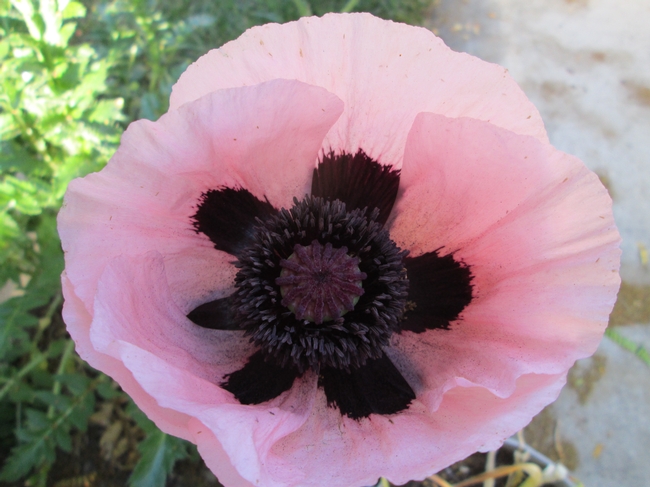
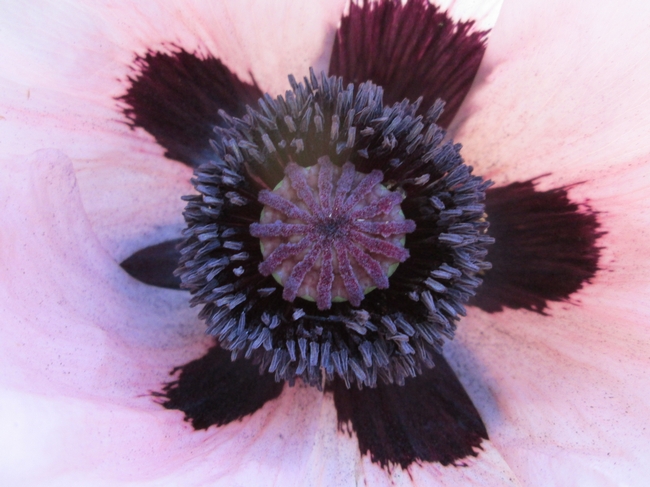
Oriental Poppies (P. orientale). These perennials are perhaps the most striking with huge flowers held on strong stems in late spring or early summer. They grow a clump of hairy leaves early in the year before the flower stems develop. Large clumps of flowers each up to 7 inches in shades of scarlet, white, coral or pink with a large black blotch at the base of the each petal can make a spectacular show in May, after which the foliage dies down in the summer in response to hot weather. They are also loved by bees for their black pollen. Unfortunately the roots are also irresistible to gophers!
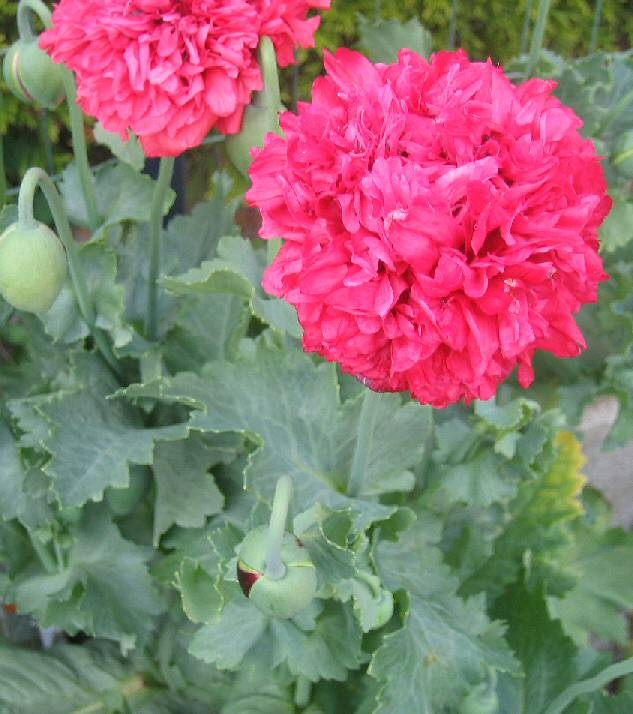
Papaver soniferum, an annual variety that has been in cultivation for hundreds of years, comes in a wide range of colors and forms. I love the original single violet flowers which have darker splotches at the base of the petals but now they also come in double varieties (which are not attractive to bees and can look rather like a mop head), and fringed versions. The colors range from very pale pinks to almost black. Unlike a lot of other poppies the leaves are grayish-green, and smooth.
A plant that has done exceptionally well in my high desert garden is P. atlanticum. This is a smaller poppy which produces a prolific crop of soft orange semi-double flowers and which arise from a clump of perennial foliage. It has a very long blooming season if it is regularly deadheaded. It is difficult to transplant, but volunteers readily and comes through our winters with ease. The large black native carpenter bees are particularly attracted to this flower and look ridiculous as they try to collect food from these delicate flowers.
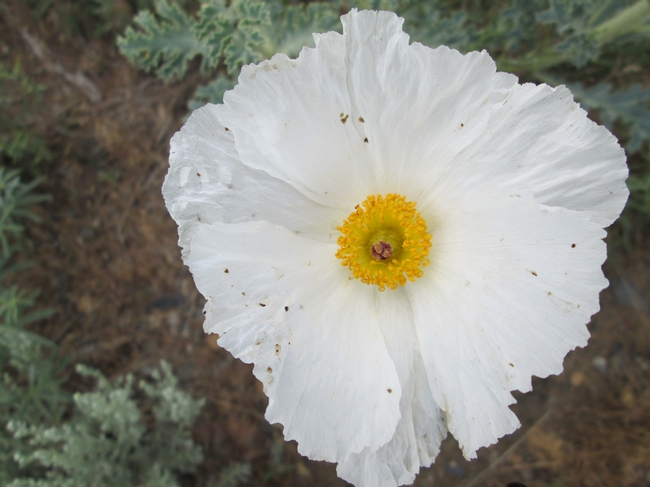
In the deserts the native prickly poppy, Argemone intermedia, is just coming into bloom. An annual or biennial, it has large crinkly white flowers the delicacy of which belies the prickly plant's tough nature, so unless you have an area given over to plants that like dry rocky terrain, you probably would not want to plant this in your garden. It is much loved by insects of all sorts.
Another native plant with similar flowers and no prickles is the shrubby Romneya coulteri the blooms of which look like fried eggs with their crepe-papery petals surrounding a boss of golden stamens. It is native to the Californian coastal regions, and is probably borderline hardy in the Owens Valley but I have seen a spectacular hedge of them growing in West Bishop. They are quite tricky to get established since they require fire for the seeds to germinate, and have rubbery roots that do not hold a ball of soil well for transplanting. The best method is to find a rooted sucker and try transplanting that. However, once established in ideal conditions these plants can spread rapidly and reach 6ft-8ft.
There are many more types of poppies, both native and cultivated and seeds of these available, both from suppliers of native plant seeds and catalogs such as www.edenbrothers.com/PoppySeeds that specialize in garden varieties.
It is hard to find flowers that give so much reward for so little effort.


